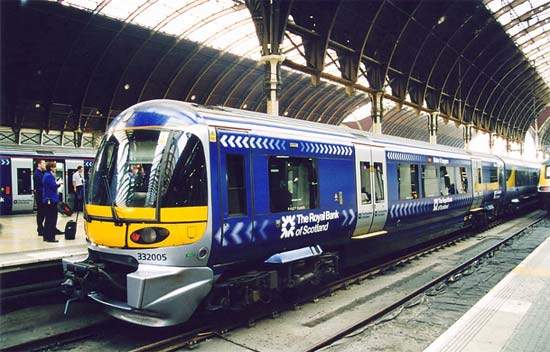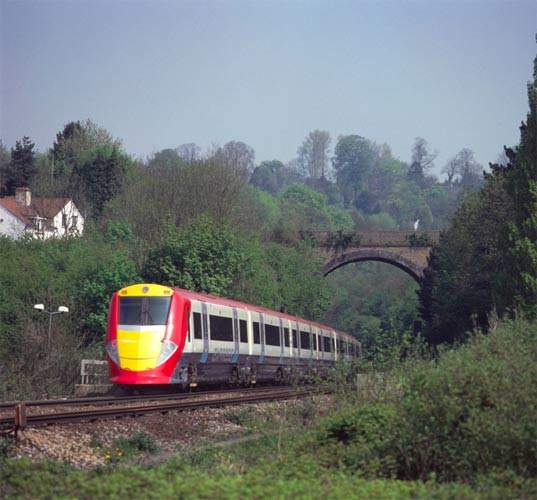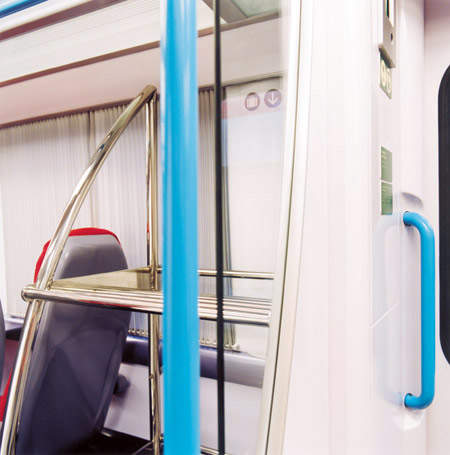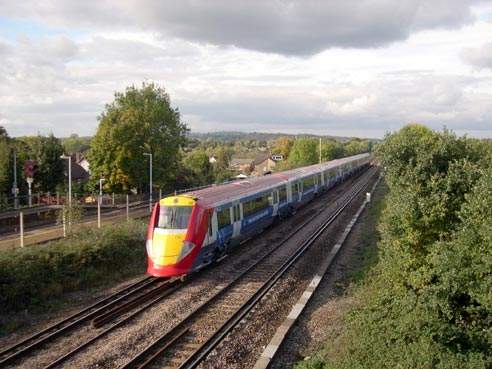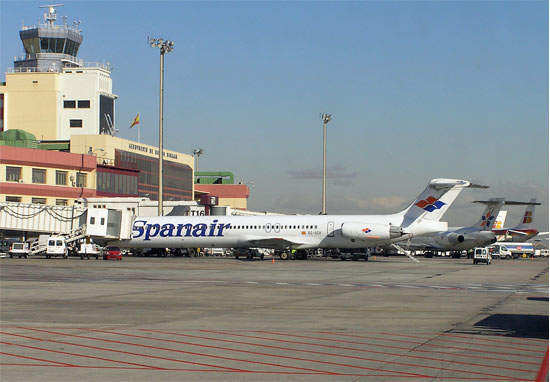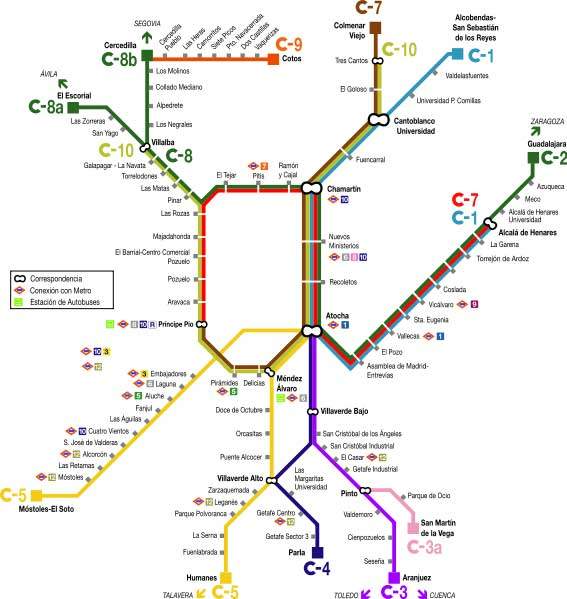With over 45,000 passengers in 2006, Madrid Barajas Airport is the busiest in Spain and the fifth busiest in Europe. Following completion of a
fourth terminal in February 2006, its capacity increased to 70 million a year.
Barajas is some distance from Madrid’s city centre and has a metro link, but there is no direct heavy rail link from the national RENFE system. It is also one end of one of the world’s intensively worked air passenger routes, that to Barcelona. With the anticipated opening of high speed rail services between these two, a national rail link to the airport will further encourage land-based travel to and from long distance flights.
Airport rail links have become increasingly popular across the world. In the UK, for example, London Stansted, Heathrow and Gatwick all have heavy rail services allowing passengers to reach the centre of the capital by travelling on one train, and
gain access to other national railway services. In Germany the process is further developed with airport stations being on the route of long distance trains as at Frankfurt (Main), Köln/Bonn and Düsseldorf, similarly elsewhere with Amsterdam Schiphol and Zürich.
The Spanish Ministry of Development announced in November 2006 that it is to build a new direct airport rail link to Madrid Barajas Airport, and issued a call for tenders.
THE PROJECT
There is already one rail link, operated by the transport of arm of the Communidad de Madrid, the Metro Line 8 running from the city centre to Barajas Terminal 4 station opened in May 2007, the initial 1999 station becoming re-designated as Terminal 1, 2 and 3.
In March 2007 the Spanish Ministry of Development announced the award of a joint contract to infrastructure company Ferrovial Agromán (who in June 2006 took over BAA, operator of London Heathrow and the Heathrow Express rail service) and construction specialists Azvi €109.5m to build the rail link between Madrid Chamartín and Madrid Barajas Airport, due to be completed by summer 2010.
The aim of the new rail link is to provide a direct service between the airport and Chamartin station in Madrid, which is currently being redeveloped
as the terminus of the new Madrid-Valladolid high-speed line, providing direct connections from the airport to RENFE’s national intercity network.
INFRASTRUCTURE
The airport rail link will use a mixture of existing routes and new alignments to reach Terminal 4. Provision has been made at the terminal for a railway station during construction, but this will require fitting out.
Running from Chamartin station in central Madrid, the airport rail link will use existing track for the first 1.9km of its route before joining the belt line on the east side of Madrid. This latter section is to be quadrupled over a distance of 2.2km
to accommodate the airport service, allowing maximum capacity to be maintained for existing rail services.
A grade-separated junction will be built for access to the new alignment to carry trains to Terminal 4. This will consist of a 4.7km tunnel running directly to Terminal 4. In total, the airport rail link will be 8.8km long, and the fastest journey
time will be around five minutes from Chamartin to Terminal 4. Track gauge will be the Spanish standard of 1668mm.
Two new stations are to be built for the airport rail link. The first is at Manoteras on the belt line, and will form an interchange for the Pinar de Charmartin-Las Tablas light rail currently under construction. The second station will be underground
at Valdebebas on the 4.7km tunnel section.
To further serve the developing Spanish AVE high-speed network, airport services are likely to be extended across the city, providing connections from the airport to the major railway interchanges at Atocha and Chamartin.
ROLLING STOCK
The airport rail link is expected to become part of the Madrid Cercanias suburban railway network that serves the suburbs of Madrid.
There is already a substantial fleet of electric multiple units in service, all capable of the new line speed of 100km/h, ranging from the 440 series introduced in 1974 (which pre-dated the Cercanias concept), 446 (1987), 447 (1993) and
450 double-deck trains that entered service in 1990.
At this stage no details have been revealed as to whether existing rolling stock or new trains will be used to provide the service to Barajas Airport. However, the route will be electrified at the Spanish standard of 3kV dc rather than the 25kV ac of the new high speed lines..
SIGNALLING AND COMMUNICATIONS
Signalling is expected to follow standard practise for Spain, with ADIF the responsible body. The line will be equipped with both ASFA and ERTMS signalling systems. Communications systems will be required at the three new stations – Terminal 4, Manoteras and Valdebebas, to keep passengers informed about departure
times. To allow emergency vehicles to operate, track in the tunnel section will be unballasted.
THE FUTURE
When the Barajas Airport Rail Link opens it will allow greater integration of transport assets within Spain. The new line will allow air passengers to link directly onto the national railway network
for further onward connections through Chamartin and Atocha stations.
Both these principal stations will be on the developing high-speed network that will allow passengers to reach Seville from Madrid in just two-and-a-half hours (total distance 417km). Equally, despite air being the fastest and first choice for travel
between Madrid and Barcelona, the Barajas rail link will allow passengers to choose between air travel and the new 651km high-speed line, due to open in 2007.

